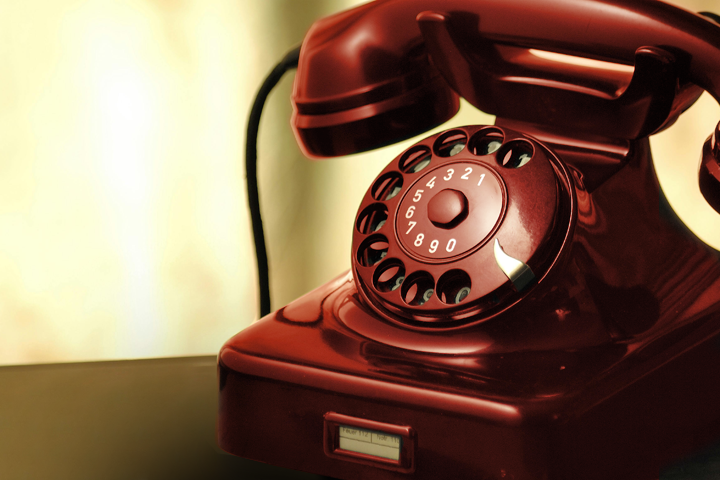The telephone exchange at the end of the world

London’s Kingsway telephone exchange is a unique piece of telecommunications history, soon to reopen as a tourist attraction – Adam Hughes explores what lies beneath.
As well as being home to Cerillion’s head office, London is full of curious telecoms landmarks, from the BT Tower, once the tallest building in the city despite not officially existing, to the Central Telegraph Office, where Marconi made the first public radio transmissions in 1897.
One such location is soon to be unsealed for the first time in decades, and given a new lease of life as an immersive tourist attraction.
The Kingsway telephone exchange was a hardened Cold War-era telephone exchange beneath Holborn, in central London, a place that would have facilitated phone calls that could have saved the world, or doomed it to destruction.
Proposed in 1940 at the height of the Blitz, the tunnels were designed to shelter up to 8,000 people below Chancery Lane underground station. Other bunkers were also built under Clapham (now used to grow vegetables for local restaurants), Goodge Street, Camden Town, and St. Paul’s, which was abandoned after it was found to be putting the Cathedral’s foundations at risk.
By the time the shelters were completed however, the worst of the air-raids were over, so the Chancery Lane bunker was repurposed as a government communications centre, built in tandem with two other underground exchanges in Birmingham and Manchester.
There are rumours that, in the interim, the tunnels housed Station IX, a secretive unit of Britain’s wartime espionage outfit, the Special Operations Executive, dedicated to creating gadgets for undercover agents on the continent (inspiring James Bond’s Q Branch).
Post-war, it was determined that using the tunnels as shelters for people would be largely obsolete in the face of the growing threat of nuclear weapons, so in 1949, the same year that the Soviet Union detonated its first atomic bomb, the General Post Office (GPO) took over the bunker.
For use as a trunk telephone exchange, the shelter was extended by the addition of four shorter tunnels, completed in 1954. Such was the secrecy of the project that all excavated soil was transported miles outside of London for disposal.
At its peak, the exchange could deal with 6,000 calls simultaneously and handled up to two million calls a week, or around 15% of London’s long-distance traffic. And to keep its 200 on-site staff entertained in the event of Armageddon, there was a restaurant, games room, and a licenced bar, which claimed to be the deepest in the United Kingdom. Four diesel generators and 22,000 gallon fuel tanks meant the exchange could power itself for six weeks.
In 1956, Kingsway became the UK termination point for TAT-1, the first transatlantic telephone cable, which ran between Newfoundland and Oban, Scotland. From London, it continued to Copenhagen, Stockholm and Helsinki, before reaching the Kremlin.

Running over TAT-1 was the Moscow-Washington hotline, granting the presidents of the Soviet Union and United States a direct means of communication during times of crisis.
Contrary to popular depictions (like as seen in 1964’s Dr. Strangelove), the hotline was never a red phone, but a teleprinter. And to ensure no sabotage or subterfuge, the cipher machines used to encrypt messages were built in Norway, a neutral country.
One year after the Cuban Missile Crisis, the hotline became operational on 13th July 1963. The first message sent by the Americans on the opening day read “THE QUICK BROWN FOX JUMPED OVER THE LAZY DOG'S BACK 1234567890,” while the Soviets responded with a poetic description of the setting sun.
Its first proper use came later that year when President John F. Kennedy was assassinated. Further use over the decades included during the Six Day War, the Soviet invasion of Afghanistan, and the US invasion of Iraq. Its most recent use came in 2016, though since 2006, hotline correspondence has usually been via email.
In 1980, investigative journalist Duncan Campbell infiltrated the Kingsway exchange tunnels for an article “A Christmas Party for the Moles” in the New Statesman. Gaining access via an unsecured manhole cover in Bethnal Green, he cycled the length of the tunnels to Whitehall, finding no resistance along the way.
Beginning in the early 1980s, the site was subject to a phased closure when the worst of the Cold War was over – that, and after large quantities of asbestos were found on-site. BT subsequently put the site up for sale in 1996 and again in 2008 for a buyer “with the imagination and stature to return the tunnels to productive use.”
Kingsway telephone exchange originally had three entrances; today, only one remains behind an inauspicious door on Furnival Street, which is set to become the entrance to the exhibition. However, you will have to wait till 2027 to see what lies beneath.
And if you’re upset that you missed the chance to snap up the tunnels, then you’re in luck – another hardened telecoms facility, this one outside Chicago and belonging to AT&T, was put up for auction earlier this year.
Update [22/07/2025]: We've had our first glimpse inside the Kingsway tunnels currently under refurbishment, which will soon also house the Museum of Military Intelligence.

